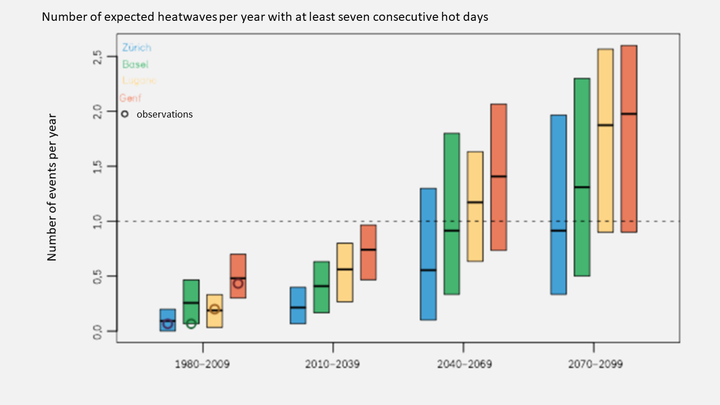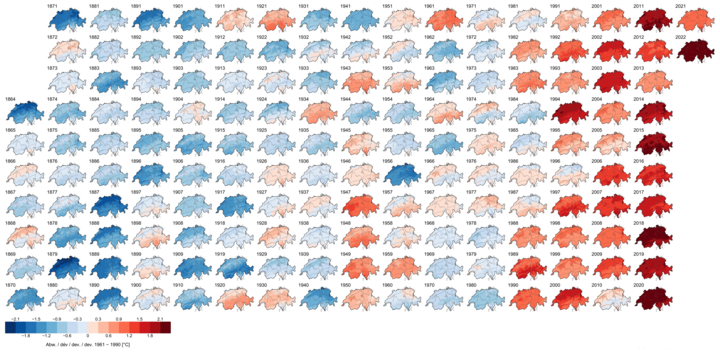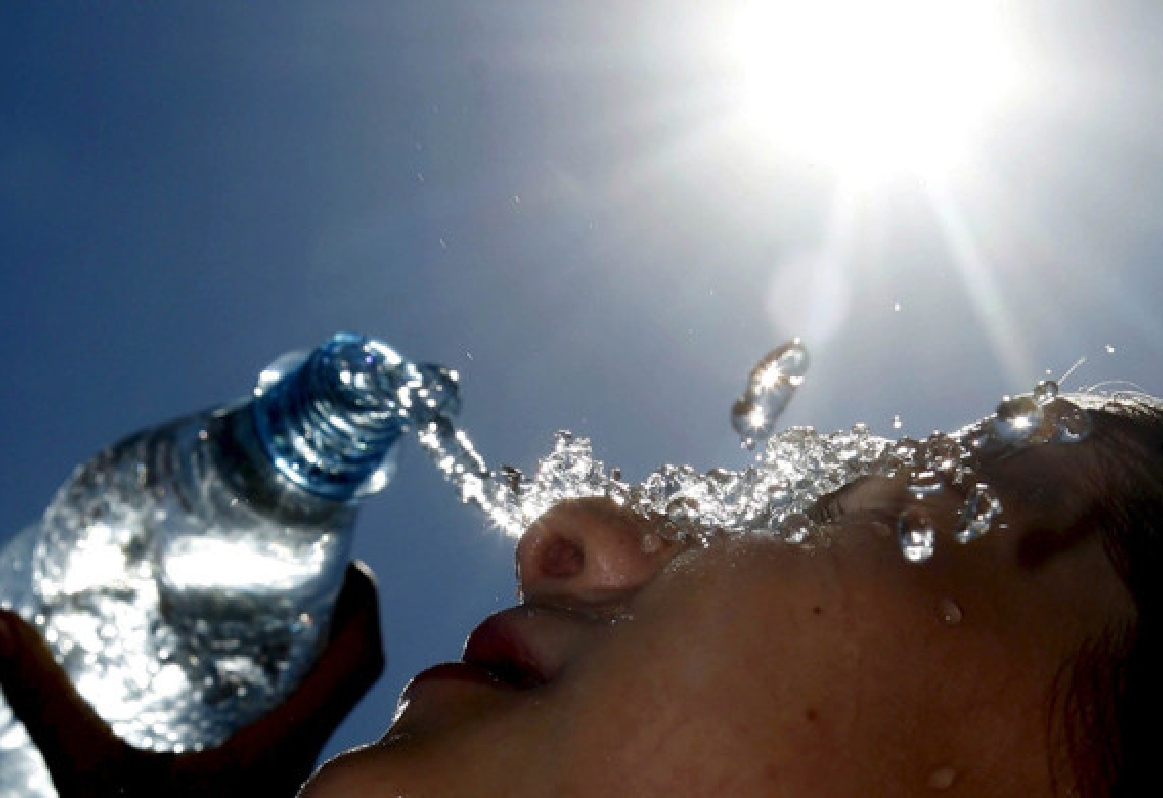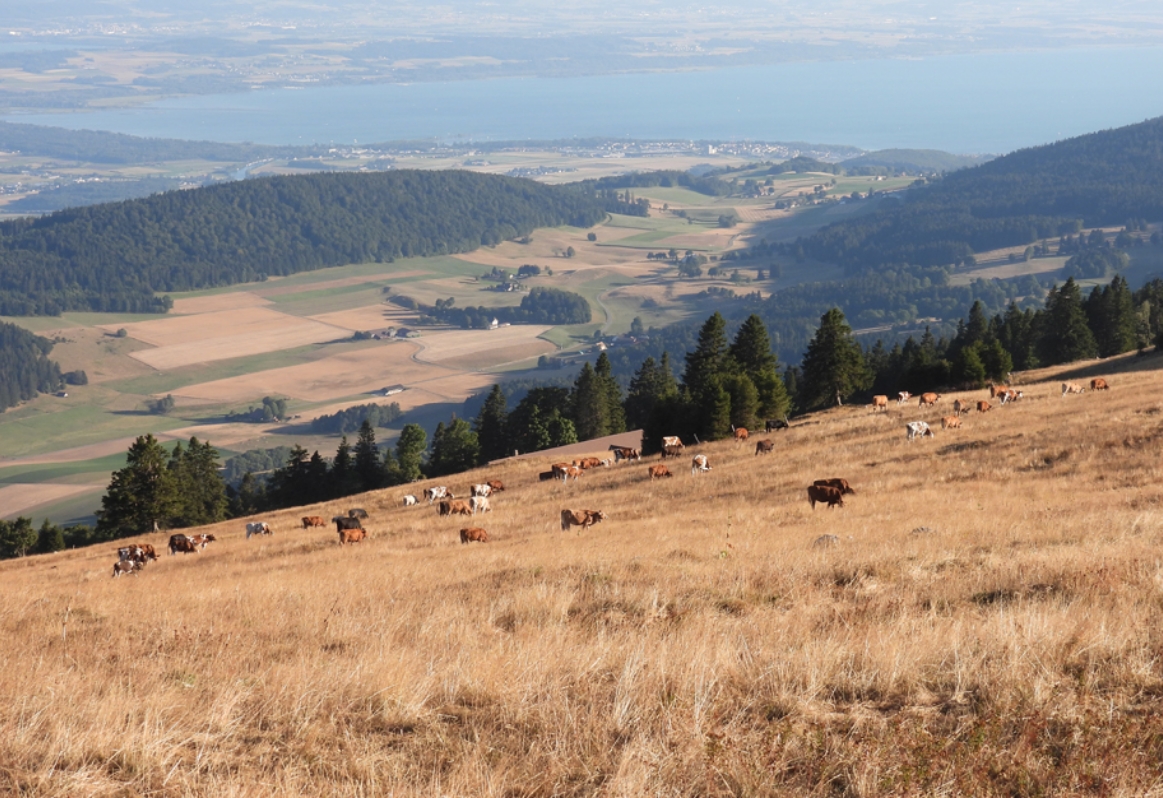The National Risk Analysis describes heatwaves as one of the greatest dangers to the Swiss population, as they cause the most deaths of all natural hazards every year. The federal government records heat-related deaths.
Due to climate change, heatwaves in Switzerland will become more frequent, more intense and last longer in future. The heat load is highest in densely populated urban areas, where sealed surfaces lead to a heat island effect. In lower-lying regions such as the Central Plateau, Ticino and the low Alpine valleys, the National Centre for Climate Services NCCS expects a significant increase in very hot days and tropical nights in which the temperature does not fall below 20 degrees Celsius.
Threat
Risk to health
Heatwaves are a particular health risk for elderly or chronically ill people, pregnant women and small children, as well as for people who do strenuous physical work outdoors. They can even be life-threatening.
Heat coupled with long periods of fine weather without wind also promotes the formation of ground-level ozone and increases the associated health risks.
Endangering intact ecosystems
Heatwaves in combination with an average increase in temperature are a threat to the intact functioning of ecosystems and affect agriculture. Many plant and animal species cannot adapt quickly enough to the changed conditions. The forest and its services, such as timber quality, its protective function or as a recreational area, are also affected. Waters that are too warm are life-threatening for fish and aquatic life. Due to rising temperatures, invasive species can spread more quickly, as can mosquitoes and ticks, which can cause infectious diseases.
Climate change
Climate change is also making the weather more extreme in Switzerland. While heatwaves are increasing, cold spells are occurring much less frequently. The CH2018 climate scenarios show that if greenhouse gas emissions continue to rise, an average summer in the middle of the century will be 4.5°C warmer and the hottest days even 5.5°C warmer than today.
The number of frost days has decreased by around 20 % in the last 40 years. The number of ice days (when the temperature remains below 0 degrees Celsius all day) is also decreasing. Larger lakes are hardly frozen over any more. Climate change is causing plants and trees to flower earlier in the year. This increases the risk of frost damage, which can lead to crop failures.
Heat warnings
Heat warnings
MeteoSwiss has been issuing heat warnings since 2005 and is constantly optimising and developing the warning system. Since 2021, MeteoSwiss has referred to a heatwave if the average daily temperature is 25 °C or higher for at least three days in a row. In addition, the Swiss Tropical and Public Health Institute (Swiss TPH) updated the heat measure toolbox in 2021 for the attention of experts and authorities.
Measures
Effective measures
A combination of measures is needed to combat heat. Actors at all levels are responsible for this: Authorities that promote climate-adapted urban development, experts who design a blue-green environment (natural and near-natural water and planted areas) and homeowners who implement climate-friendly construction methods. Individuals can protect themselves through their behaviour. The federal government makes recommendations on this. Examples of measures include:












